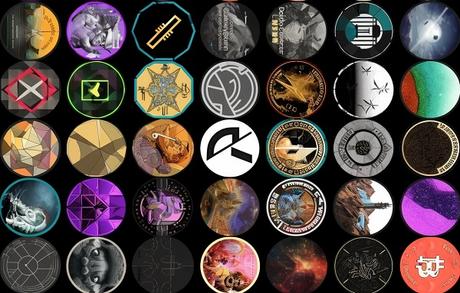The Rise of DeFi and NFTs
DeFi (decentralised Finance) and NFTs (Non-Fungible Tokens) are two emerging crypto technologies taking the world by storm. They have several applications across various industries and have been fueled by changes in the marketplace. Let’s explore these two technologies, how they work and where they are used.
What is NFT?
NFTs are digital assets representing proof of authenticity or ownership of a specific item. It could be a piece of art, collectables, music, virtual real estate or a graphic. Unlike cryptocurrencies like Bitcoin or Ethereum, which are fungible (interchangeable), each NFT has distinct characteristics that make it irreplaceable and unique.
What is DeFi?
Decentralised Finance, or DeFi, is an umbrella name for financial applications and services built on blockchain networks. Most of these applications are built primarily on Ethereum. DeFi aims to recreate traditional financial systems, such as lending, banking, investing and trading, in a decentralised manner. This would help reach the crypto goals of removing intermediaries like banks and brokers.
DeFi protocols use intelligent contracts. These are self-executing agreements with predefined rules and conditions. Smart contracts automatically execute transactions and manage assets. Therefore, they provide security, transparency and immutability in financial transactions.
So now we know a little more about them, let’s look at how NFTs are being applied in the following sectors of the economy.
1. Gaming and Virtual Worlds
NFTs are used in gaming to represent in-game assets, such as weapons, characters, or virtual real estate. Players can buy, sell, and trade these assets on various platforms, creating a thriving digital economy within games and virtual worlds.
Most casinos currently only accept cryptocurrencies on their sites. You may visit a crypto site and try one of the titles to try them. Head to the Funclub Casino login page to create an account and transact with cryptocurrencies. However, many may adopt NFTs to give their players a chance to own part of the gaming ecosystem.
2. Digital Identity and Credentials
NFTs can verify and authenticate digital identities, certifications, academic degrees or professional licences. This can help weed out applicants who use forged papers and credentials. In addition, the technology has the potential to streamline processes like job applications, conduct background checks and verify credentials.
3. Fan Engagement and Social Tokens
NFTs enable artists, influencers, musicians, and content creators to engage with their fans by just selling unique experiences, social tokens or exclusive content. These tokens may represent membership, access to special events or voting rights.
4. Virtual Real Estate and Metaverses
Firms use NFT to claim ownership of virtual real estate within metaverses, such as Decentraland and The Sandbox. Users can use the technology to buy, sell, and develop virtual properties. This way, they create a virtual economy and community-driven experiences.
5. Tokenized Asset Trading
NFTs enable fractional ownership and trading of real-world assets, such as artwork, real estate, or rare collectibles. These assets can be represented as unique tokens on blockchain platforms, allowing for increased liquidity and transparency.

6. Decentralised Exchanges (DEXs)
DeFi has given rise to decentralised exchanges like Uniswap, SushiSwap, and PancakeSwap. These platforms allow users to trade cryptocurrencies directly from their wallets. This way, they eliminate the need for intermediaries like traditional exchanges. Such advances lower the cost of business while enhancing security.
7. Lending and Borrowing
DeFi protocols such as Compound, Aave, and MakerDAO enable individuals to lend or borrow digital assets without requiring a centralised financial institution. Users can earn interest in their crypto holdings by lending them to borrowers. These protocols also enable companies to raise financing from the general public without requiring a huge minimum amount.
8. Stablecoins
Stablecoins like Dai, USDC, and Tether (USDT) provide price stability by pegging their value to an underlying asset, typically a fiat currency. These stablecoins facilitate decentralised trading, remittances, and hedging strategies within the DeFi ecosystem. This way, organisations do not lose money to volatile cryptos while at the same time enjoying the benefits of decentralised systems.
9. Yield Farming
Yield farming involves providing liquidity to DeFi protocols in exchange for rewards through additional tokens. Users can stake their assets in liquidity pools and earn additional tokens or a percentage of transaction fees. It is cheaper to fund the DeFi protocols without taking fiat money loans. Organisations also share part of their net income with their shareholders.
10. Insurance
DeFi insurance protocols like Nexus Mutual and Cover Protocol offer decentralised insurance coverage for smart contract failures, hacks, and other risks. Users can protect their funds and investments within the DeFi space. The insurance protocols also give credibility to money lending platforms and savings accounts, as the owners are sure to get their cash in case anything happens.
DeFis and NFTs are on the Rise
The rise of DeFi and NFTs will profoundly impact the adoption of blockchain technologies in various sectors of the economy. They enable ownership and enhance the authenticity and security of individual digital assets while preventing losses. These cryptographic technologies are just in their infancy. As the technology evolves, we can expect to see even more innovative use cases in various industries.


